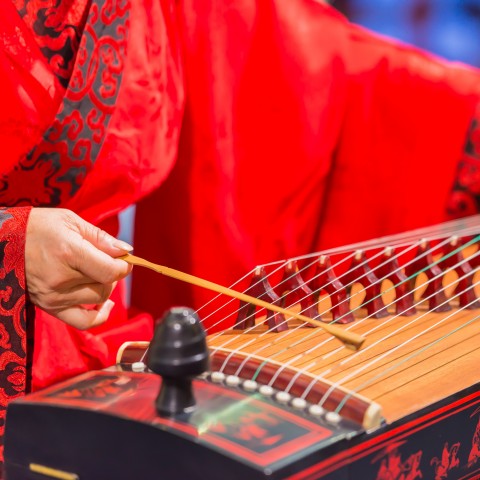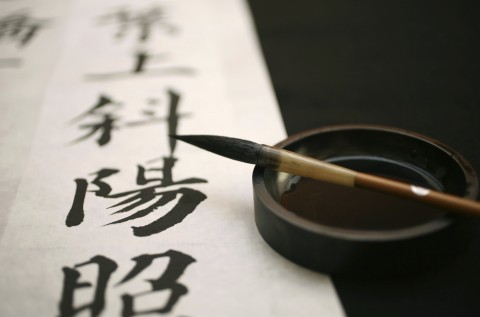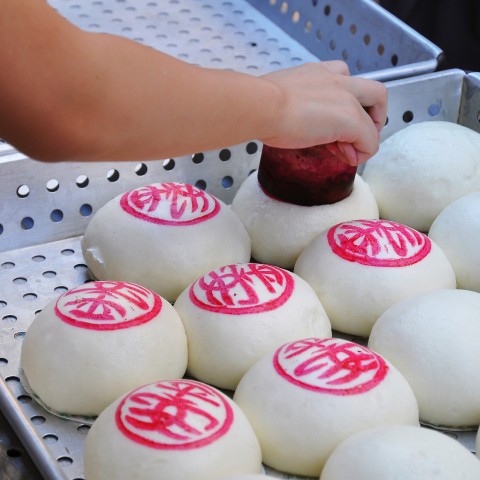
China is an old country with thousands of years of history. This rich background has created an enchanting Chinese culture and civilization that attracts nearly 1.5-million tourists in a given year.
You might have heard of such Chinese traditions as Kung Fu and the Chinese opera…but how much do you really know about them? The more you learn about Chinese culture and traditions, the more profound and fascinating they’ll become to you!
Language is always a huge component of a country’s culture, so becoming familiar with the culture of China is crucial in mastering the Chinese language. In this guide, we’ll lift the cultural curtain from one of the greatest countries in the world—and trust us, we won’t fail to amaze you!
 Table of Contents
Table of Contents

Let’s learn about all the fun of Chinese culture!
1. Values
Before we dive deeper into the Chinese culture, let’s look at some prominent Chinese cultural values.
Collectivism is the embodiment of Chinese culture, a pillar around which society functions. The Chinese are also extremely patriotic. Other values the Chinese hold dear are courtesy, modesty, harmony, righteousness, and filial piety. These traditional values can be traced back to Ancient Chinese culture, thousands of years ago.
For example, you’ll notice that Chinese people never accept compliments directly. While Westerners are more likely to reply with a “thank you,” the Chinese are more likely to express the fact that they don’t deserve such compliments. However, values like these are two sides of the same coin. While they do have their positive aspects, they can potentially prevent individual critical thinking and decrease the effectiveness of communication.
2. Philosophies and Religions
There are as many as 56 ethnic groups in China, with the Han group being the largest. Each group has distinctive traditions and beliefs, especially minority groups such as the Miao. In addition to different cultural beliefs, people may also identify with different religions. The three major religions in China are Confucianism, Daoism, and Buddhism. However, many Chinese people are not accustomed to having a religion. Unlike in many Western countries, it’s not a necessary part of daily life in China.
Confucianism is the most important philosophy in Chinese culture. It’s integrated into many areas of Chinese life, especially in the field of education. Many Chinese children learn of the founder of Confucianism, 孔子 (Kǒng zǐ), at a young age from the textbooks in school. Confucianism sheds light on ethical and socio-political teachings that help improve personal and governmental morality.
If you’ve watched any Chinese dramas, you may have heard of the term 神仙 (shén xiān). This refers to gods who live above the sky and are in charge of human lives. Different gods have different roles, such as being in charge of dreams, relationships, deaths, the weather, and so much more. This concept is from Daoism, which stresses the importance of all beings co-existing in harmony.
- → If you’re interested in such topics, feel free to check out our article on the Must-Watch Chinese TV Shows to Improve Your Chinese for inspiration!
- → You can also head over to our audio lesson on The Power of Religion in China for more insight.
3. Family and Work

No matter how busy you are from work, always try to make some time for family!
Due to the high respect the Chinese have for collectivism, family has always been prioritized over personal needs in China. It’s very common for married couples to live with the husband’s parents under the same roof, which also shows an imbalance in how the Chinese perceive males versus females.
In China, families are typically small with a maximum of three or four people. This is due to the restrictions set in place regarding birth, under which most families only have one child and some may have two. Traditional Chinese family structures are strictly based on hierarchy, so many children’s lives are arranged under the total control of their parents. Nevertheless, as people are getting more open-minded in modern Chinese society, this phenomenon is gradually improving.
Filial piety is another paramount trait for a Chinese person to have. This has made many young men—who rarely work far away from their parents—committed to all the responsibilities at home.
In the Chinese business world, people often mention connections, which are called 关系 (guān xi) in Chinese. This means that networking well is the key to making your business successful in China. People always like to treat their business partners to a meal and discuss business while eating.
4. Art
Another fascinating aspect of Chinese culture, art serves as a window into the long history of China as well as its modern-day society. Take a look at the most prominent and unique forms of Chinese art with us!
A- Calligraphy – 书法 (shū fǎ)

Even our daily writing can be a form of art!
Chinese calligraphy refers to a visual art form that emphasizes the writing of Chinese characters using traditional ink brushes. Chinese people typically use a special type of paper called 宣纸 (xuān zhǐ), which is particularly good for use with an ink brush. There are several standardized styles of Chinese calligraphy, and one can also create their own style of writing. If you’re interested, why not grab a sheet of Xuan paper and an ink brush, write some Chinese characters down, and let your imagination go wild?
B- Chinese Opera – 京剧 (jīng jù)
Unlike any other form of theater art, Chinese opera includes a wide variety of other art forms such as acrobatics, martial arts, and makeup arts. Styles can also vary depending on the region, though there are five major types of operas: Beijing, Yue, Huangmei, Cantonese, and Henan. In Chinese operas, the musical and singing styles are often exaggerated and the costumes are extremely expressive.
C- Martial Arts – 武术 (wǔ shù)
Chinese martial arts are popularly known as Kung Fu, which is 功夫 (gōng fu) in Chinese. You’ve probably seen crazy fighting scenes in Asian movies with all kinds of fighting styles based on religion. However, the ones you often see on screen are way more dramatic than the authentic Kung Fu today in the real world.
D- Ceramics – 陶瓷 (táo cí)
Everyone knows that the word “China” refers not only to the country itself but also to the famous Chinese ceramics. Because porcelain was originally found in China, Chinese ceramics has a long-established history dating back to the Paleolithic era. The art was later perfected during the Ming Dynasty. The most classic Chinese-style ceramics feature a blue and white willow pattern and are often coupled with some kind of dragon design, which is another iconic representation of China.
E- Ancient Poetry – 古诗 (gǔ shī)
Ancient Chinese poetry played an important role in shaping Chinese literature, and more broadly, Chinese culture. Many Chinese people have a habit of expressing their feelings with verses from Ancient Chinese poetry, showing that these poems have integrated into modern Chinese society.
This old poetry style is also called classic Chinese poetry, which differs from modern poetry which requires less of a rhythm. Back in the old days, poetry was one of the most powerful influences on people’s view of the world. The deep emotions and strong messages conveyed through this poetry could transform one’s view on both personal matters and political matters—an impressive feat for a time when technological media was not an option.
5. Chinese Food

Have you ever tried authentic Chinese food?
The history of Chinese food culture can be traced back to thousands of years ago and has taken different shapes depending on local preferences. Under the profound influence of Chinese history, Chinese people naturally enjoy sharing dishes. Contrary to many other cultures where everyone gets their own dish, the Chinese share large dishes with everyone around the table. Classic Chinese dishes such as hot pot and dim sum are a great representation of this habit. The most common eating utensil is chopsticks.
There are vast differences between Chinese food culture in the northern regions and the southern regions. The eight major Chinese cuisines are:
- Sichuan
- Jiangsu
- Shandong
- Zhejiang
- Anhui
- Cantonese
- Fujian
- Hunan
Ginger, garlic, and green onions are staples across all Chinese cuisines. Star anise and chili are also added to certain dishes. Unlike many Western cuisines where the entree is usually meat, the main component of a Chinese meal is always grain-based (rice, noodles, and steam buns). However, meat is also a star in Chinese food culture as Chinese people eat a variety of meats ranging from fish to ducks, rabbits, and goose.
Aside from main meals, tea is also a big part of Chinese people’s diet. In China, tea is more than just a drink: it is what brings people together and inspires conversations. People love to have a cup of tea and just appreciate the complexity of its lingering taste while having in-depth conversations. This is how the Chinese, especially old people, want to spend their relaxing afternoon. Tea is also widely used in Chinese cuisines and medicines.
- → For even more information on Chinese cuisine, see our lesson titled Too Many Chinese Culinary Choices.
6. Traditional Holidays
Each country has unique holidays that represent the country’s traditions and values. In Chinese culture, holidays tend to revolve around family and loved ones. While we can’t cover all of the major holidays here, we will introduce the most important ones.
A- Chinese New Year – 春节 / 新年 (chūn jié / xīn nián)

You know what people usually do for the new year: fireworks!
Chinese New Year, also known as the Spring Festival or 春节 (chūn jié), is just as important in China as Christmas is in Western countries. On Chinese New Year, everyone is reunited with their families to celebrate the beginning of the new year, based on the traditional Chinese lunar calendar.
Families hold a reunion dinner, called 年夜饭 (nián yè fàn), on Chinese New Year’s Eve. Dumplings are usually the staple food for this meal. Traditionally, elders need to give children 红包 (hóng bāo), or red envelopes containing money. Other activities during the Chinese New Year include setting off fireworks, going to temple fairs, and watching the traditional TV show made just for the New Year called 春晚 (chūn wǎn).
B- Mid-Autumn Festival – 中秋节 (zhōng qiū jié)
The Mid-Autumn Festival, called 中秋节 (zhōng qiū jié) in Chinese, is another important holiday in China. It usually takes place on August 15 (according to the lunar calendar) when the full moon occurs. Mooncakes are a traditional rich pastry served during this holiday, as their appearance is a perfect reflection of the full moon. They’re usually filled with sweet red-bean paste or lotus-seed paste.
C- QingMing Festival – 清明节 (qīng míng jié)
The QingMing Festival, or 清明节 (qīng míng jié), is a unique holiday from Ancient Chinese culture, observed for the purpose of reminiscing the dead. It takes place in April, on the fifteenth day after the Spring Equinox. During the holiday, Chinese families will visit and sweep the tombs of their deceased family members, serve ritual offerings, or even burn joss paper in the hope of providing them a better life in the other world.
D- Dragon Boat Festival – 端午节 (duān wǔ jié)
The Dragon Boat Festival is known as 端午节 (duān wǔ jié) in Chinese, and it’s held on May 5 of the traditional Chinese calendar every year. The festival originated from the death of the heroic poet and minister named Qu Yuan, who committed suicide in the Miluo River due to the shame he felt after the emperor decided to become allies with Qin. Today, in remembrance of Qu Yuan, people have dragon boat races and eat 粽子 (zòng zi), a traditional dish made with sticky rice filling wrapped in bamboo leaves.
7. Conclusion
How many Chinese culture facts have you learned now? Hopefully a ton! The profound and ancient Chinese culture, though, is far deeper than what we’ve introduced here. You’ll need to really immerse yourself to get a real taste of it.
If you want to experience Chinese culture in a more systematic way, ChineseClass101.com is here to provide you with a wide spectrum of materials taught by professional teachers. Our lesson structures are designed to create a fun and natural Chinese learning experience for you. Why not create your free account today and give it a try?
Happy learning!










